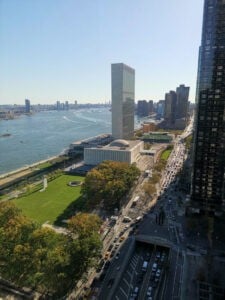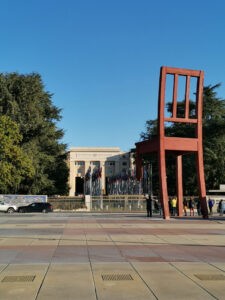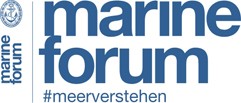There is also a German naval officer among our southern neighbours - on a mission for understanding and peace.

Headquarters of the UN in Manhattan. Photo: Stefan Nievelstein
This question may seem surprising at first glance, as Switzerland is rather inland (sea) orientated in maritime terms. Although the length of its shores on Lake Constance and Lake Geneva alone is greater than the coastline of some countries bordering the sea, this has so far not given rise to any need for the Confederates to establish a navy. When we talk about a navy in Switzerland, we are referring to the numerous excursion steamers, some of them historic, that sail the many lakes.
This means that the German defence attaché in Bern is not wearing a maritime hat either. So why does a naval officer reside in Geneva, a city with over 130 international organisations? Geneva is not only the headquarters of the International Red Cross, but also an important location for the United Nations.
One part of the UN portfolio is the Conference on Disarmament (CD), which deals with issues of nuclear disarmament, security in outer space and other security-related topics. In addition, there are the "classic" conventions and other disarmament treaties, which ultimately aim to contain developments that jeopardise security. The work in Geneva is carried out from the German Permanent Mission to the CD, which, unlike the majority of other delegations, also has a military policy advisor as a link between the Ministry of Defence and the Federal Foreign Office. His tasks currently include the Convention on Conventional Weapons (CCW), the Arms Trade Treaty (ATT), LAWS (Lethal Autonomous Weapon Systems), EWIPA (Explosive Weapons in Populated Areas), cyber and other issues related to these fields.

The Broken Chair wooden monument symbolises the fight against anti-personnel mines. Photo: Stefan Nievelstein
One topic will be considered in more detail as an example: A regulation is being sought for autonomous weapon systems (LAWS) that defines the issue of human control on the one hand and does not restrict technological developments, many of which can also be transferred to civilian applications, on the other. As there is no generally recognised definition of LAWS, the discussion is all the more difficult, as a common basis for the negotiations must first be sought and found. The range of different positions could not be wider: from a complete ban on the development and use of autonomous systems to moderate regulation with the simultaneous inclusion of all technological possibilities through to unhindered development and use. The debate has been going on for several years and has now reached a point where the first solutions are emerging and could be adopted this year. It is also important to observe the parallel discussions in the EU and NATO in order to benefit each other as much as possible and harmonise the lines of development.
This example also emphasises the new quality of future disarmament policy. Whereas in the past the focus was almost always on existing weapons systems, often weapons of mass destruction, it is now important to keep pace with advancing technological developments and to address systems that do not yet exist. Regulatory considerations must therefore be made at the very beginning of the development process and accompany the weapon system throughout its entire life cycle.
The work in the various committees of the different conventions and treaties, expert groups or conferences of states parties is mainly centred in Geneva and uses the Palais des Nations as its central venue. However, the highlight of the annual sequence of conferences in the field of disarmament is the work in the First United Nations General Committee, which normally meets for five weeks from October to the beginning of November in New York. During this time, the 65 to 75 draft resolutions to be negotiated each year for the General Assembly meeting in December are prepared, voted on and finalised in draft resolutions. For this part of the conference, "Team CD" moves from Lake Geneva to the Hudson River, swapping the Palais des Nations for the UN headquarters.
It is precisely this multinational cooperation with delegations from all regions of the world that makes the work so multifaceted and interesting, as it allows insights into the mindset of states that are not conveyed to a comparable extent in other international or multinational (military) assignments.
Author: Captain Stefan Nievelstein is a military policy advisor at the German Permanent Mission to the Geneva Conference on Disarmament.












0 Kommentare